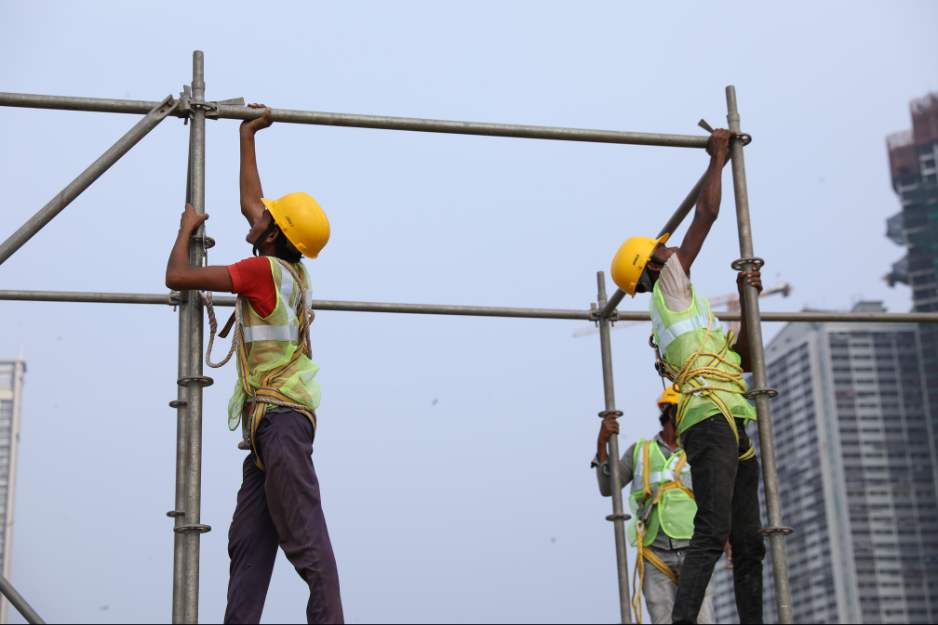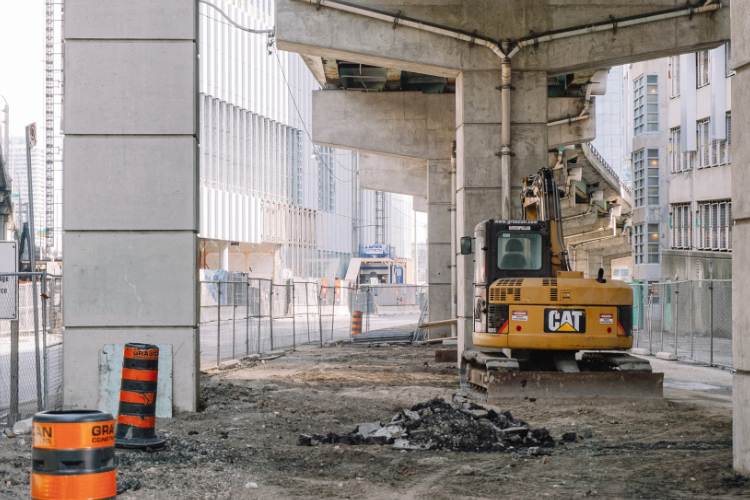With material tariffs in effect, subcontractors are facing significant uncertainty. Tariffs are expected to drive up costs on key materials such as steel, aluminum, lumber, and gypsum, and have the potential to affect pricing for both existing and future projects.
Tariffs can present uncertainty similar to what subcontractors experienced during the pandemic, including potential supply chain disruptions, material shortages, and schedule delays. Fortunately, there are practical steps subcontractors can take to protect their business, safeguard project timelines, and negotiate more strategic contracts.
Billd sat down with Maegan Spivey, Contracts Specialist at Document Crunch, who has almost a decade of experience interpreting contracts for construction projects. She provided the following tips for subcontracting executives and business owners who are navigating the unknown impacts tariffs may cause.
Here’s her recommendations for what subcontractors need to do as soon as possible—whether they’re working on a current project or bidding on new work—to help defend their business from uncertainty.
Table of Contents
Review Your Existing Contracts Now
If you’re currently working on a project, the best thing you can do right now is carefully review your contract to ensure you have a sound understanding of the remedies available to your business and your GC in the case of unforeseen delays or cost increases that arise from tariffs. Spivey said many subs sign agreements without fully analyzing the fine print, but in times of pricing volatility, your contract is your first line of defense.
Key Contract Clauses to Review
- Material Price Escalation Clause – Some contracts include provisions that allow price adjustments if material costs rise unexpectedly. These provisions may be carryovers from the supply chain issues seen after the pandemic. If your contract has one, familiarize yourself with the process and conditions.
- Change Order Eligibility – Some contracts allow subcontractors to recover costs through change orders, but they may come with strict notification or other requirements. Ensure you understand what a change order can be used for and how the process works; don’t leave a chance for denial or dispute.
- Liquidated Damages – If material delays happen, are you on the hook for liquidated damages? You could be looking at tariff increases plus delay damages if you miss any notices.
- Notice Requirements for Cost Impacts – Many contracts require subcontractors to formally notify the GC within a set timeframe to qualify for any remedies. Missing these deadlines could leave you absorbing the increased costs, even if you did everything else right. Check your contract to understand the time limitations for these requirements.
- Force Majeure & Excusable Delays – If tariffs cause supply chain issues, force majeure and excusable delay clauses may provide protection against penalties for delays.
- Change in Law Provisions – Some contracts specifically address scenarios where government policy changes mid-project. If your contract includes this language, you may have a valid claim for tariff-related increases.
- Check the Prime Contract – If you have access to the prime contract, see what remedies the prime has for tariffs. It may differ from your contract, so it’s worth double checking.
Since not all contracts include these provisions, it’s critical to review your agreement now and start a conversation with your GC. If you don’t act quickly, you may find yourself locked into your original pricing without the ability to adjust for price fluctuations.
Additionally, get written quotes for your full bill of materials with clear price-lock dates.
For Bidding & Future Projects: Protect Yourself Before Signing
If you’re preparing to bid on a new project, factor material price fluctuations into your pricing strategy and contract negotiations. Today’s volatility demands a more cautious and strategic approach, similar to how construction executives operated during the pandemic.
How to Protect Yourself in New Contracts
- Set a Clear Pricing Validity Period – Your suppliers may start to offer quotes that are only valid for 30 days or less. In these scenarios, your bid should reflect the same timeframe, ensuring you’re not locked into pricing that could quickly become outdated.
- Qualify Your Bid – Include language in your proposal terms that allows for cost adjustments if material prices rise unexpectedly due to tariffs. Also make sure the language you used to qualify your bid is included in your contract.
- Make Sure Your Bid Templates Are Up to Date – Work with your attorney if you need help drafting or updating language for your bids, especially as it relates to validity periods or qualifying your bids.
- Review the Terms & Conditions of the Contract Thoroughly – Make sure your contract addresses price escalations, excusable delays, and material substitutions before signing.
- Negotiate Material Price Protections – If tariff remedies are missing, request contract clauses that allow for cost recovery or price adjustments in the event of supplier cost increases.
- Reserve the Right to Substitute Materials – If a particular material becomes too expensive, having the flexibility to swap it for an equivalent, non-tariffed alternative can save both money and schedule time.
- Get Proactive With GCs – If you haven’t already spoken to your GC, talk to them before you’re both operating under high-tension situations.
If your initial contract doesn’t provide these protections, Spivey said don’t be afraid to suggest redlines (changes) or add addendums. Some GCs may push back, but it’s far better to negotiate upfront than to be caught off guard when prices rise. Her rule of thumb when asking for changes: Make it easy to say yes to what you’re requesting. Be reasonable and offer explanatory comments for changes.
How Tariffs Can Impact Project Schedules
Material tariffs don’t just impact costs—they may also create supply chain disruptions that can throw off your project schedule. These delays could stem from multiple factors, including supplier lead times, finding new suppliers, or material approvals or substitutions. Even if your contract doesn’t allow for recovery of money, a remedy for time could save you in additional damages. She recommends you check your contract to see if this applies to your scenario.
For subcontractors, schedule delays mean more than just lost time—they can also result in significant financial burdens, including:
- Extended equipment rentals
- Increased overhead costs
- Delayed retainage payments
- Delayed or additional mobilizations
- Possible project suspensions or terminations
The best way to mitigate delay risks is to ensure your contract provides for flexibility on time extensions, and be clear in your contract’s list of excusable delays (or sometimes called a force majeure clause) by adding language about delays related to tariffs. You should contact a licensed attorney to get specific language you can use to protect yourself from the unforeseen. If your agreement allows you to recapture lost time, you can avoid additional penalties beyond the bigger supplier invoice.
How the Negotiation Process Can Help you Evaluate GCs
While reviewing contract terms, consider how receptive your GC is to your redlines and addendums. If a GC refuses to discuss reasonable contract protections, it could be a sign that the project—and relationship—may be difficult. Ask yourself:
- Are they open to negotiation? If a GC is rigid about contract terms now, they will likely be just as inflexible when issues arise during the project.
- How have they treated other subcontractors? A GC with a reputation for being difficult is unlikely to make exceptions for you.
- Will taking this contract put your business at risk? If a contract is structured in a way that forces you to absorb all the risk of price volatility, seriously consider whether it is worth pursuing.
While subcontractors in the past may have feared losing work for requesting contract redlines, the industry is shifting. More GCs now recognize that subcontractors need fairer terms to stay viable, Spivey said, but it’s still a slow-moving trend. However, by proactively negotiating your terms, you are showing your GC that you are running your company responsibly, which is what they want.
If a GC refuses to budge, it’s worth considering whether this is a partnership that makes sense for your business.
Protect Yourself: Read Your Contracts & Safeguard Your Business
The norm for subcontractors used to be to sign a contract as-is or lose the work, but reasonable changes are becoming more common in today’s market. Tariffs, price escalations, and supply chain disruptions make it critical to read contracts thoroughly and negotiate balanced terms. Even if you sign the contract without requesting any changes, you still need to be aware of what’s in the contract and so does the team working the project.
As you are reviewing your contracts, here’s Spivey’s advice for what to keep in mind:
- Larger contracts often allow for more redlines, so try to keep the redlines proportionate to the size of the document or size of the scope for the project.
- GCs don’t always budget time for contract negotiations, so being reasonable and strategic in your requests is key.
- Don’t forget to revise escalation clauses (and other remedies) for reasonable notice periods. Complying with tight turnaround times is critical to recovering for costs and delays.
Material tariffs are creating industry-wide challenges, but subcontractors who take the time to understand their contracts and negotiate where necessary will be in the best position to weather pricing volatility while keeping their business strong.
Disclaimer
The information in this article is not and should not be construed as legal, financial, or other professional advice. You should always consult with a licensed attorney or financial professional when negotiating contracts and making decisions that impact your business.





